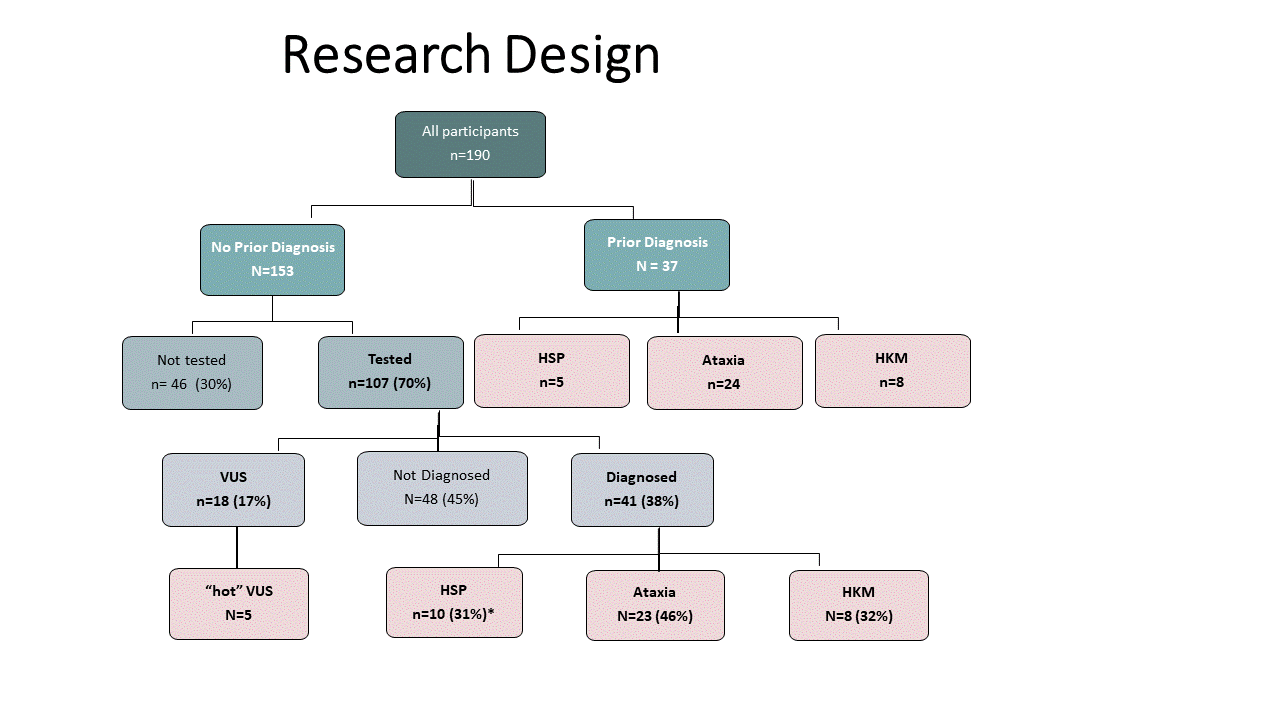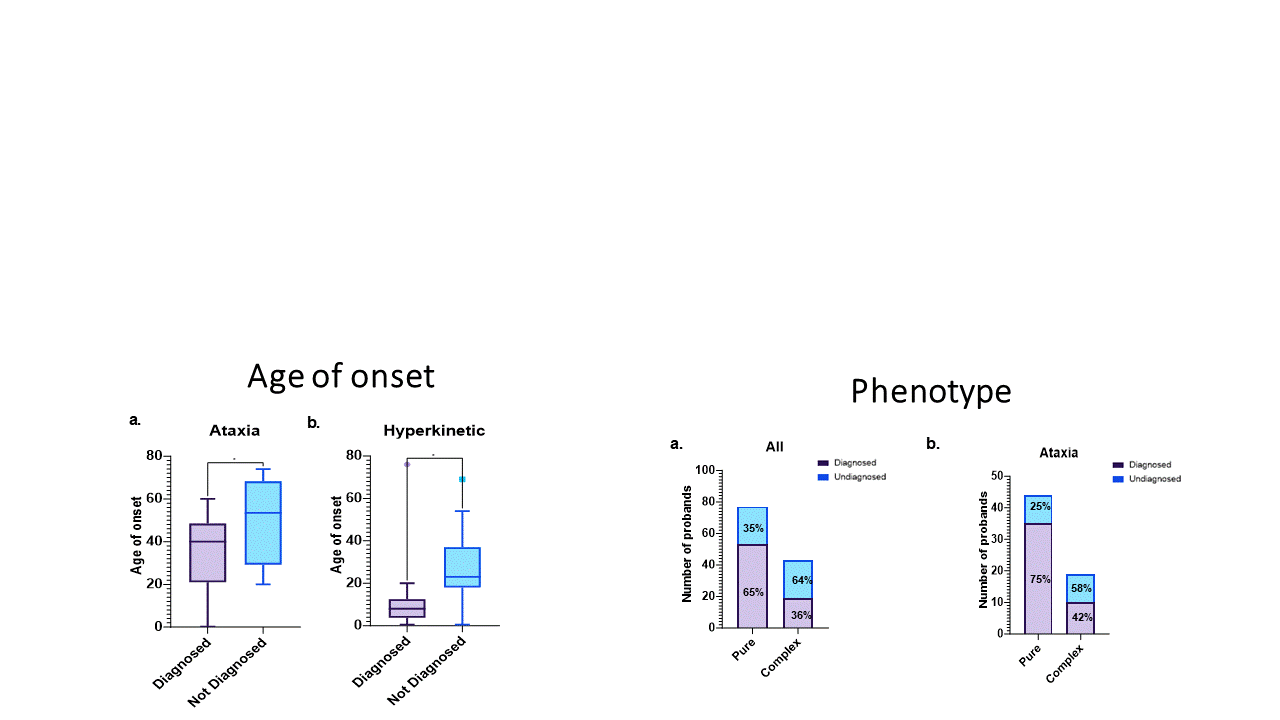Category: Genetics (Non-PD)
Objective: We present the genetic testing diagnostic yield in a tertiary center Neurogenetic Clinic, focusing on rare movement disorders.
Background: The diagnostic yield of genetic testing for movement disorders is increasing as next-generation-sequencing (NGS) and advanced molecular testing are incorporated into routine work-up. We examine factors which effect diagnostic yield.
Method: Retrospective analysis (2019-2023) of 190 patients aged 1-84 years diagnosed with cerebellar ataxia (CA, N=92), spastic paraparesis (SPP, N=50) and hyperkinetic movement disorders, including dystonia and dyskinesia (HMD,N=48). Work-up included NGS and repeat expansion testing. Undiagnosed cases underwent exome-sequencing (ES) or genome-sequencing.
Results: Amongst 190 patients, 107 were newly referred undiagnosed patients. Amongst these a genetic diagnosis was reached in 46 cases (43%): 29 (63%) by NGS and 17 (37%) by repeat expansion analysis. Diagnostic rate reached 46% in CA, 31% in SPP and 32% in HMD. Diagnostic yield of NGS panels was 26% and of ES (singleton and trio) 33%. Diagnostic yield was higher among patients with younger onset of disease and isolated phenotypes. 29 patients had at least two brain MRI examinations during their work-up and 24 patients completed non diagnostic CMA tests.
Conclusion: Our Neurogenetic clinic reports higher diagnostic yield compared with reported literature (20-30%), especially in patients with early-onset disease. ES increased diagnostic yield, compared with panel testing, especially amongst patients with complex phenotypes. Our findings indicate that performing a tailored genetic work-up fashion according to phenotype complexity and age of onset can reduce the need for auxiliary and molecular testing. Further cost-benefit analysis is required to decrease expenses and ensure timely diagnosis.
Fig 1 Research Design and Yield
Fig 2 Diagnsotic yield correlations
References: Klein CJ, Foroud TM. Neurology Individualized Medicine: When to Use Next-Generation Sequencing Panels. Mayo Clin Proc. 2017 Feb;92(2):292-305
Ngo KJ, Rexach JE, Lee H, Petty LE, Perlman S, Valera JM, Deignan JL, Mao Y, Aker M, Posey JE, Jhangiani SN, Coban-Akdemir ZH, Boerwinkle E, Muzny D, Nelson AB, Hassin-Baer S, Poke G, Neas K, Geschwind MD, Grody WW, Gibbs R, Geschwind DH, Lupski JR, Below JE, Nelson SF, Fogel BL. A diagnostic ceiling for exome sequencing in cerebellar ataxia and related neurological disorders. Hum Mutat. 2020 Feb;41(2):487-501
To cite this abstract in AMA style:
D. Penn, Y. Amir, G. Ben David, J. Zitser Koren, G. Gurevich, H. Baris Feldman, R. Alcalay, Y. Yaron, P. Ponger. Improving Work Up amongst Patients with Rare Movement Disorders according to Diagnostic Yield Findings– Update from Single Center Neurogenetic Clinic [abstract]. Mov Disord. 2024; 39 (suppl 1). https://www.mdsabstracts.org/abstract/improving-work-up-amongst-patients-with-rare-movement-disorders-according-to-diagnostic-yield-findings-update-from-single-center-neurogenetic-clinic/. Accessed April 26, 2025.« Back to 2024 International Congress
MDS Abstracts - https://www.mdsabstracts.org/abstract/improving-work-up-amongst-patients-with-rare-movement-disorders-according-to-diagnostic-yield-findings-update-from-single-center-neurogenetic-clinic/


